The feeling was surreal.
If you tell someone you’re going to Peru, they will say “oh, so you’re going to Machu Picchu?” I admit, when my wife and I first discussed the trip Machu Picchu was the driving motive. But after touring for several days, Peru’s other attractions tempered its singular significance. We had more historical context and knew more about other impressive sites, it was no longer the end all and be all for the journey.
Still, on the Day of the Visit, once we boarded the train and made our way up the Sacred Valley towards the site, the “are we actually doing this?” feeling set in. Right up to the time we got to the ruins it didn’t seem real.
Machu Picchu is one of those places you see a picture of while growing up, and it looks so exotic, so far-flung, so inaccessible the idea of being there seems impossible. But yet here we were, on the cusp.
We started the day in Urubamba, then bused to Ollantaytambo to catch a train. That train ride is worthy in its own right.
Riding through the Sacred Valley, cliffs tower on both sides. Some sections are flat enough to allow farming, we saw the corn was off to a good start.
Click on photos for better resolution
As we traveled further, the cliffs closed in and we paralleled the Urubamba River.
Urubamba. Sounds strange, doesn’t it? Without context, I hear drums beating in Africa, not the center of an Inca universe. The Inca called the Urubamba River “Willkamayu” (Quechua for “sacred river”) and believed it mirrored the Milky Way, which they considered a celestial river. This ties into their cosmology, calendar, and religion, and gives rise to the name “Sacred Valley.” This sacred river flows to the base of Machu Picchu, one of the reasons the Inca selected the site.
The valley narrowed and the cliffs soared, taking on a level of verdant vegetation we hadn’t yet seen in Peru. Machu Picchu crosses the border into the Amazon region; jungle in the Inca roads leading in and cloud forest higher up.
 On the train from Ollantaytambo On the train from Ollantaytambo |
 Busing from Aguas Calientes to M.P. Busing from Aguas Calientes to M.P. |
Once the train ride ended we were in “hot water”. Specifically, Aguas Calientes, a little town at the base of the mountain whose existence centers on the Machu Picchu tourist trade. My guess is, some guy came into town stinking of four days hike on the Inca Trail and after hearing of a hot bath exclaimed, “Agua Caliente!”
From Aguas Calientes we bused to Machu Picchu, snaking up the mountain, peering over the occasional cliff dropping off, and hoping to not meet a bus coming the other way on the single lane. After 20 minutes we arrived at the bus terminus, cycled through the gate, and walked up a zigzag path from surreal to reality.

Gathering up the group like a mother hen, our guide leads us to an iconic overlook, one of many.
The main body of the city laid before us, with the Huayna Picchu mountain in the background. Huayna means young or young man, Picchu means pyramid shaped mountain or peak, ergo, young peak. You can climb it, but only 400 people per day are permitted, in two shifts. With its peak 1,180 feet above the city, you best be in shape and not fearful of heights. We had neither permit nor time to attempt even a portion of it.
The city divides into three sections: the upper section on the west had religious, royal, and administrative buildings; the lower section to the east was manufacturing, storage, and residential; the two sections separated by a central plaza. Terraces surround the entire complex providing reinforcement and drainage for the slope walls, as well as flat space for farming and decorative plantings.
Machu Picchu was commissioned around 1450 by the 9th Inca king, Pachacuti Inca Yupanqui. He’s the same fellow who kickstarted expanding the Inca from yet another mountain tribe into an empire. It’s not known if he ever lived there, construction was not completed in his lifetime and was continued by his son, Topa Inca Yupanqui. Evidence suggests it was never completed, and what we see today reflects restoration work done since its rediscovery.
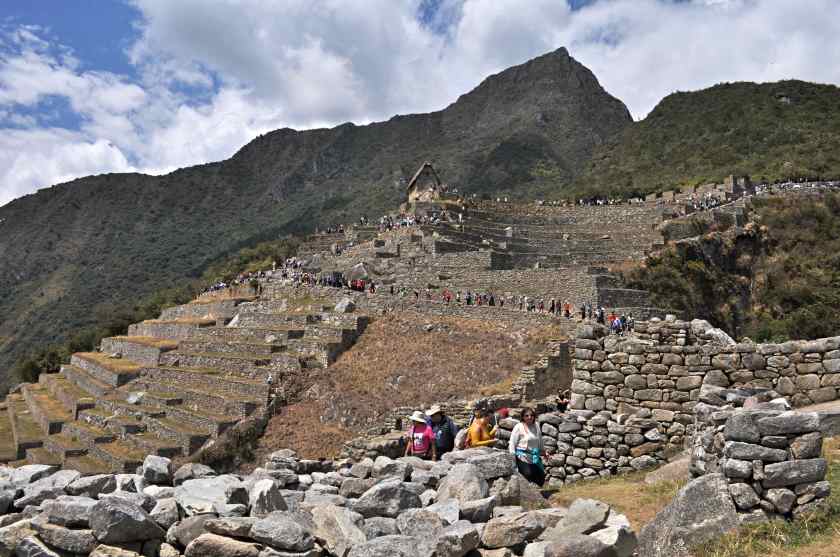
The ruins lie in a saddle between Huayna Picchu and a peak on an opposing ridge; our guide tells us this peak is the actual Machu Picchu (Old Peak), the city is simply Picchu.
Like many of the Inca ruins, while all the stonework is detailed and precise, the more massive blocks and polished stonework is found in the temple areas.

This highly refined stonework – no mortar, fitted so well not even paper can fit in the cracks – is famous for its longevity and resistance to earthquakes. But in this temple area, a fault line shows its effects. Our guide suggests that some of the offending earthquakes may be from the pitter-patter of thousands of tourist’s feet. The official limit is 2,500 visitors a day; who knows what the unofficial number is.
The central plaza was used for large public ceremonies. It also illustrates the level of work required to build Machu Picchu: you didn’t think the mountain came with all these flattened areas built in, did you? The Inca (and probably some of the pre-Inca mountain tribes) were masters of converting slopes into terraces.
The city had lofty views of nearby valleys.
Stairs were everywhere. Elevation at the plaza is around 8,000 feet, getting around requires fitness.
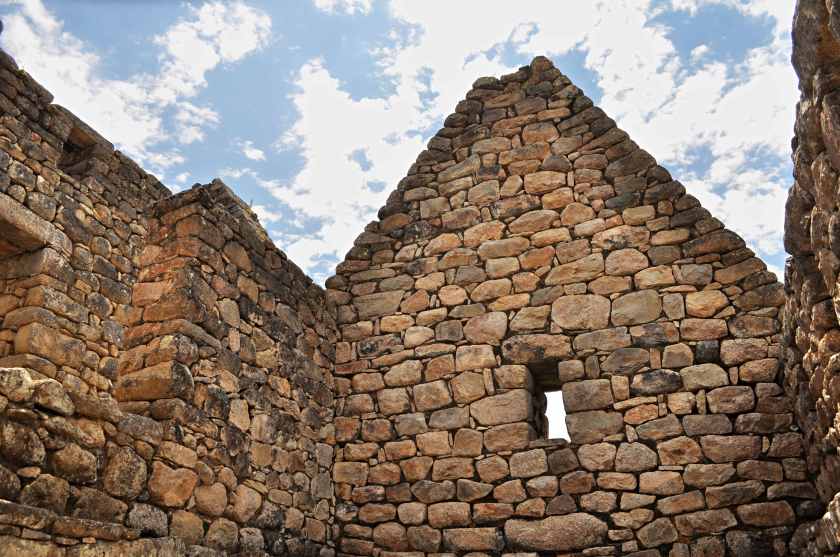
The cliffs/terraces on the west side were steep – a lousy place to lose your balance. The Urubamba River passes below.
Our guided tour lasted about three hours, and we had about 45 minutes more of free time before heading to the buses for the trip down the mountain. We used the extra time to climb higher on the Machu Picchu peak side – a substantial push given the time limit. Maybe too much of a push, but that’s grist for another story.

Our time came to an end, much like the Inca. The rise and fall of Machu Picchu mirrored that of the Inca empire, and for much the same reasons. But the Inca kept Machu Picchu a secret from the Spanish, they abandoned it and said nothing of it. For 400 years the secret remained, only the local farmers knew it. Then in 1911 Hiram Bingham stumbled onto it while looking for Vilcabamba, the last hold out of the rebellious Inca rulers, and was led to it by a farm boy.
Although we made it to Machu Picchu, clambered around the undeniable reality of its stonework, visually soaked in its grand vistas, endured its climbs and descents, and marveled that something so amazing could be kept secret for 400 years, the fact we’ve done it still seems surreal.


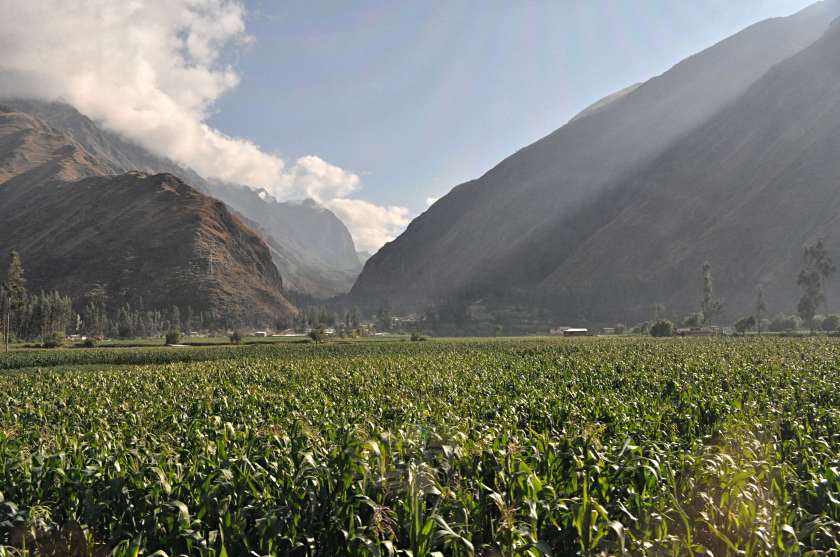
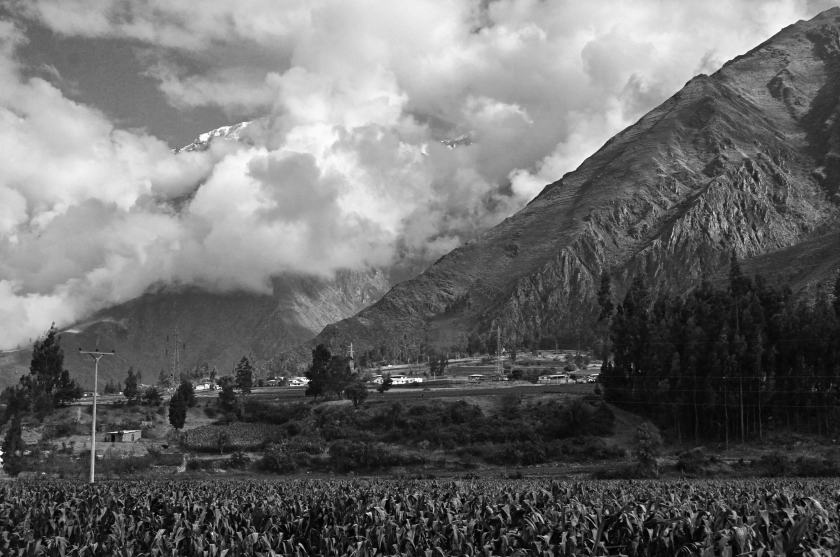
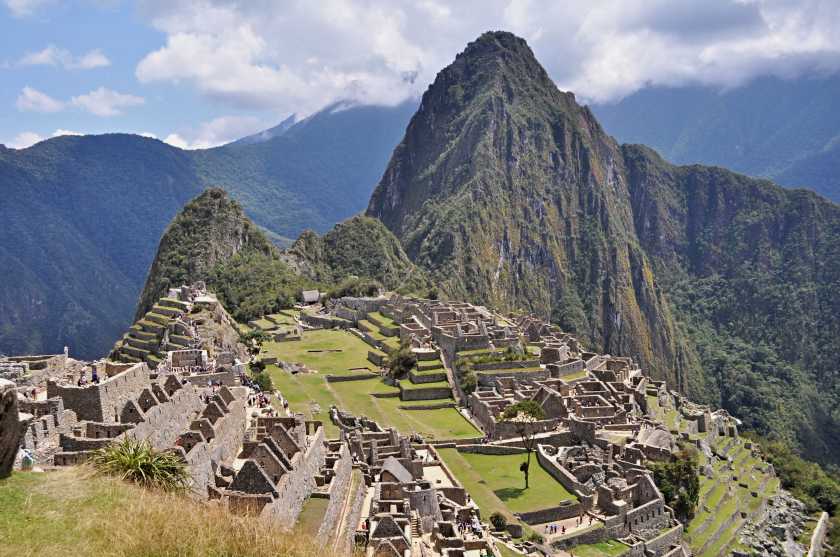
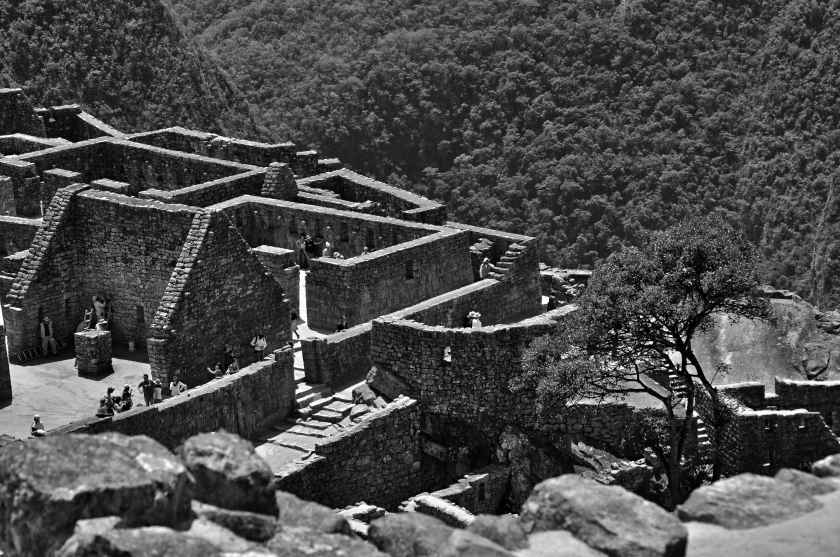
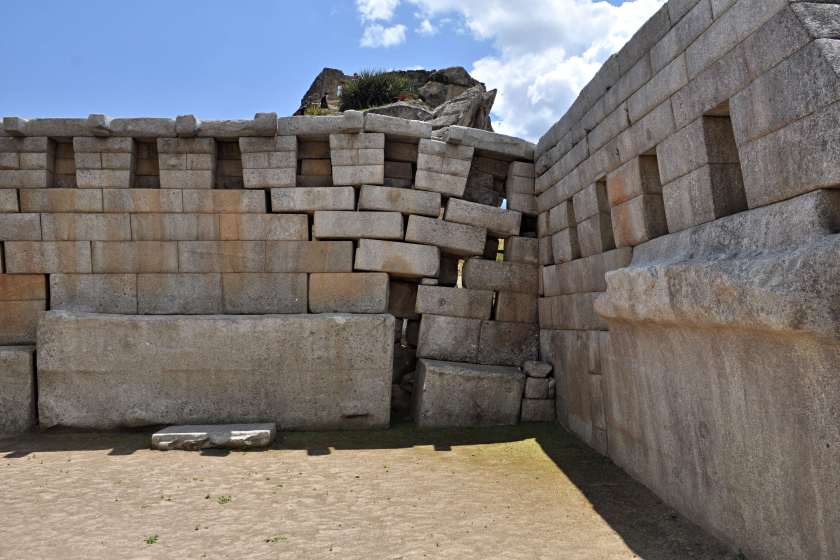

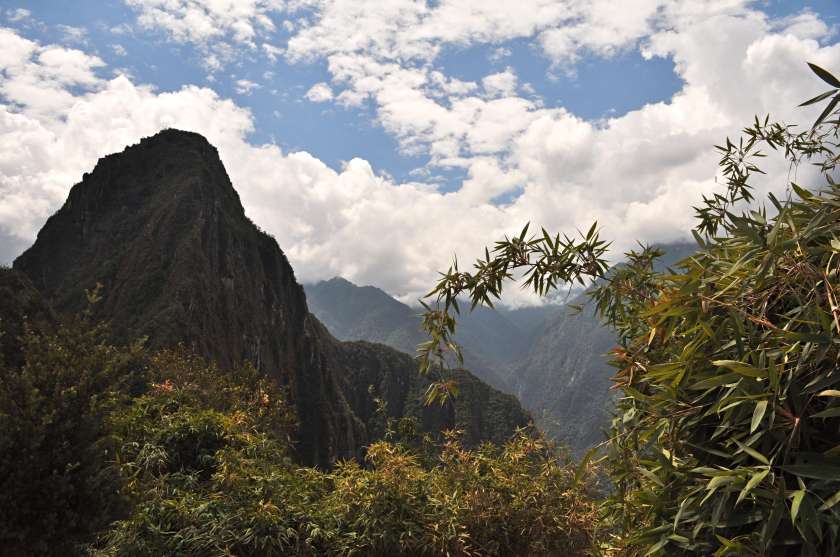
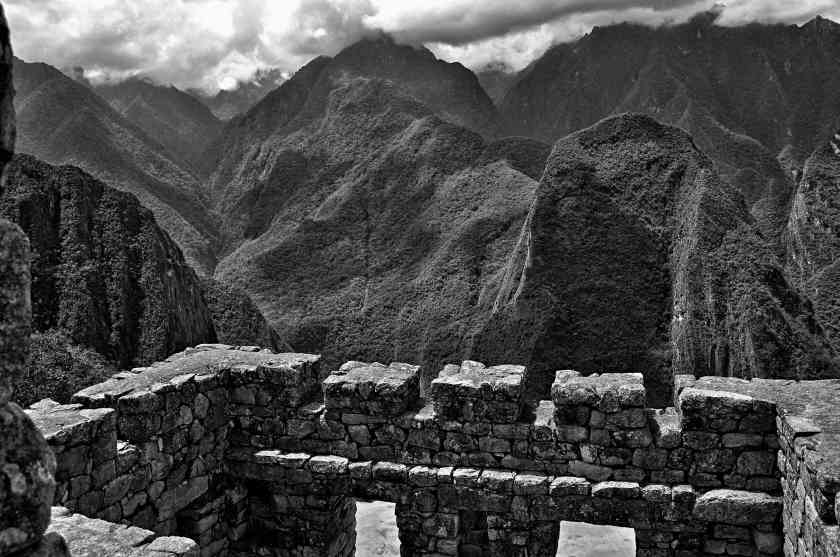
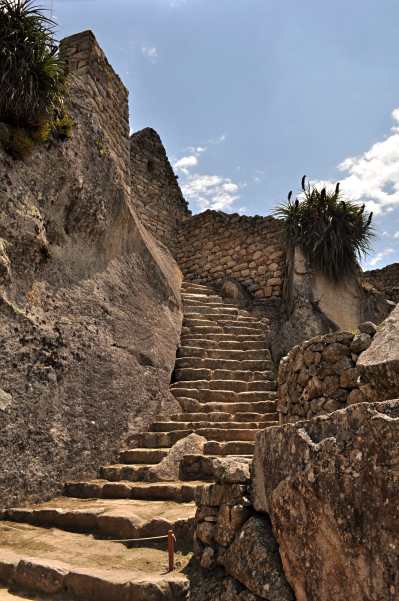
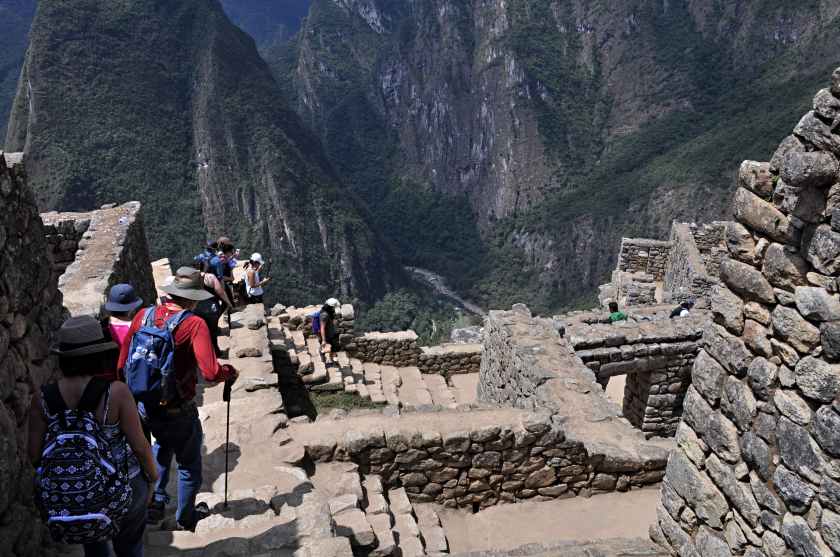
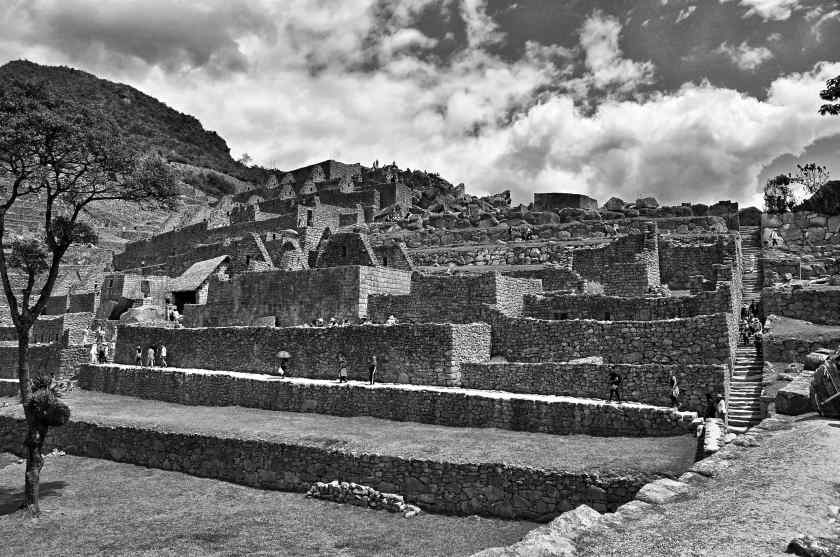

Ah… you heard the farm boy story too. I wonder about that one! But it makes a good tale. Thanks for sharing your pictures and story.
LikeLiked by 2 people
I’ve seen that one referenced in several sources, and I like how it puts the idea Bingham “discovering” it in it’s proper place. I’m happy to share.
LikeLiked by 1 person
Machu Picchu por fin! Like you, I appreciated far more than “just” MP while in stunning Peru, but it really is the pinnacle (in both ways), isn’t it? There can’t be anyone jaded enough to stand there and not feel the aura of those ruins. Through some work I was doing at the time, I got to go back several times after our Inca Trail trek, and every single time I felt goosebumps being in such a special place. It sounds like it met your expectations, which is great, because I’m sure they were high! Thanks for sharing the wonderful photos and story of your visit.
LikeLiked by 2 people
“Special place” and “aura”. That’s sums it up nicely. 🙂 You’re lucky to have more than one visit, and time for more than just a taste.
LikeLiked by 2 people
You had more time to spend in the main complex than we did. At this point in my life, I don’t know if I will ever get back to MP, though I wish I could. You’re so right when you realize that you’re finally there. Like you, my wife and I just stood there at that magical vantage point and couldn’t believe we finally made it. It’s a wonder that Bingham and the NGS saw more than what was there before their eyes because ‘renovation’ (clearing) didn’t begin until later. In any case, we were so glad to have finally made it, just like you.
LikeLiked by 2 people
I’d heard some tours only have a couple hours, that would be tough after going all that way. At least you were there. 🙂
LikeLike
Like the interplay of photos and story-telling, the B&W and color. Magical looking place. Cool shot of you and your wife on the banner, too.
LikeLiked by 1 person
I thought maybe the black and white and color mix would echo the idea of the then and the now. I guess it’s not by accident it’s considered one of the modern 7 wonders of the world.
LikeLiked by 1 person
Most impressive, Dave. Great photos and a lot of information.
LikeLiked by 1 person
Too much information?
LikeLiked by 1 person
Definitely not! I always like to know a bit about the places I’m looking at.
LikeLiked by 1 person
Wonderful place and pictures !! This is so much in my wish list… 🙂
LikeLiked by 1 person
I think it’s on most travelers wish list. Every once in while in a lifetime, a fantasy can come true. The interesting thing is, setting it up was no more difficult than a trip to Europe for us – it just seems impossible.
LikeLike
Its great that you could be there… 🙂
LikeLiked by 1 person
That is one place I’d love to visit, although with my fear of heights, I’m not sure that’s ever going to happen. Fabulous photos, thanks for sharing!
LikeLiked by 1 person
Overall there’s not much that’s close to an edge, although I hear the stairs for Huayna Picchu can be a bit scary. Maybe it’s worth a try…
LikeLiked by 1 person
I knew that at some point in your journeys through Peru you would be getting to Machu Picchu, Dave. It looks just as impressive in your photographs as in the ones I see in magazines. I find the information you gave about it interesting too. Those Incas were certainly industrious. It couldn’t have been easy creating all those mountain terraces. You’re so lucky to have had the chance to visit such an amazing place.
LikeLiked by 1 person
It’s an impressive place, anyone can get magazine level pictures. I agree, we were lucky to see it, but it is the sort of luck you can make, rather than hoping against fate. Like winning the lottery, without the terrible odds.
LikeLiked by 1 person
That’s true about it being luck we can make, although it might take a lottery win to get four plane tickets to get there. There really are some places that are just so amazing, no matter where we turn, we can get an amazing picture (unless we accidentally photograph our feet or our thumb, of course). 🙂
LikeLiked by 1 person
Well, when you have a couple kids you’ve already made some luck – can’t be too greedy. Maybe in a few years.
LikeLiked by 1 person
That’s a good point! There’s a definitely a reasonable chance we’ll get there someday.
LikeLiked by 1 person
More happy memories! I stayed overnight in the hotel at Aguas Calientes, so could wander around in the early evening when MP was practically deserted. A very atmospheric place. I met a couple of young Scotswomen who were doing the same – one said she’d dreamt of visiting MP since she was a little girl and her “I’m here at last!” feeling was overwhelming.
LikeLiked by 1 person
I imagine that seeing the place without the crowds, and in evening light must have been sublime. A memory to treasure.
LikeLiked by 1 person
I am speechless, Totally awesome…TY for sharing with Us.
LikeLiked by 1 person
My pleasure. (Really) 😉
LikeLike
It’s on our list! I’ve heard the altitude changes are one of the main challenges of the hike up the mountain. Part of the reason, I wonder if I could do it. Your commentary accompanied by those stunning visuals give me reason to believe that I might just do it! 🙂
LikeLiked by 1 person
Machu Picchu is actually one of the lower altitude places in the high country. But it still might be a good idea to take it easy the first day at altitude, and be well hydrated. Based on some of the hills you’ve described climbing in your recent posts, you’d probably do fine.
LikeLiked by 1 person
What an incredible experience and it brought back many memories for me of when we did the 5-day Salkantay trek to Machu Picchu.
Wonderful photos Dave!
LikeLiked by 1 person
Yeah, it’s kind of one of those “pinch me, am I awake” experiences. I’ll always remember scampering up and down all those stairs in that fairly thin air, and looking out over the ruins and the valleys.
LikeLiked by 1 person
It’s absolutely stunning and mind-boggling how it was built.
LikeLiked by 1 person